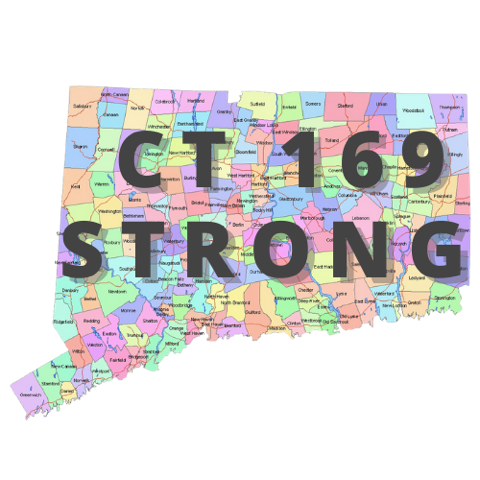
— CT 169 Strong, 3.13.2023
If the proposed “Work Live Ride bill (HB-6890) is passed as advocated by its proponents, all Connecticut municipalities could face termination of the decades-long federally backed, highly successful, brownfield remediation program, unless they permanently opt-in to the proposed transit development law and all that it entails.
The United States Environmental Protection Agency’s (EPA) Brownfields Program empowers states, communities, and other stakeholders to work together to prevent, assess, safely clean up, and sustainably reuse brownfields. A brownfield is an area of land that might be considered for redevelopment, but which is complicated by the presence of hazardous substances, pollutants, or contaminants. And the United States EPA plays a critical role in the funding for the remediation of brownfields nation-wide.
Cumulative through January 2023, $37.3 billion in federal dollars were expended, 197,693 jobs created, and 10,098 properties were made available for reuse through EPA funding and critical EPA technical assistance.
In fact, the recent Federal bipartisan Infrastructure Law is expected to invest more than $1.5 billion through EPA’s highly successful Brownfields Program and fund over 350 programs to support planning, construction, and operation of a variety of public infrastructure projects. According to the EPA “this investment in EPA’s Brownfields Program will transform countless lives and spur life-changing revitalization in communities large and small, urban and rural; all with the same desire to keep their neighborhoods healthy, sustainable and reflective of the people who call it home.”
Much has been written about the disparate effect of contaminated properties in predominately inner-cities and communities of color. In fact, while there are numerous brownfield sites in Norwalk, Stamford, New Haven, Bridgeport, Hartford East Hartford, Ansonia, Berlin, Bristol, Derby, Danbury, Meriden, New Britain, New London, Norwich, Old Saybrook, Stratford, Shelton, and Waterbury, there are no brownfield sites in Darien, Westport, Easton or Weston; and minimally affected sites in New Canaan, Fairfield and Greenwich. Clearly, access to Federal Infrastructure funding for brownfields remediation is critically important to inner-city communities which bear a disproportionate and lasting effect of former industrial activities in those towns and cities.
According to the Connecticut Department of Energy and Environmental Protection (DEEP), the distribution of the EPA funding through the auspices of DEEP is a critical component of cleaning up these inner-city properties.
But the proposed HB-6890, a transit-oriented development bill, also known as the ‘Live Work Ride” bill, would deprive communities of brownfield remediation funds unless those communities “opt-in” to the minimum housing density as mandated under the bill. For most cities, this will be a minimum 30 units per acre, for a “reasonable” area within the 500 acres around a train station, along with restrictions on parking requirements for those developments, and other requirements.
This means that the decades-long, highly successful and beneficial, federally funded brownfield remediation program would end, unless a city were to permanently opt-in to the proposed “Work Live Ride” bill provisions and all of its mandates.
Ironically, this deprived remediation funding is not generally sourced from the Connecticut tax base but is simply funded to Connecticut as block grants from the EPA to the State of Connecticut to administer in accordance with federal guidelines.
Like a parent who would withhold a gift from a grandparent to a grandchild, unless such child behaves strictly in accordance with the parents’ wishes, HB-6890 similarly deprives communities of federal brownfield remediation funding unless those communities “behave” in line with Hartford’s top down zoning “rules”.
There should be no strings attached to the disbursement of the federally funded brownfield remediation program financial assistance. Towns and cities should not have to relinquish environmental cleanup funds if they choose to conduct their own transit-oriented development tailored to their own specific needs and capacities. Depriving this essential funding to our most vulnerable communities is bad public policy and hurtful to communities that have the most need for environmental cleanup assistance. In the end, the communities that will significantly suffer from withholding brownfield remediation infrastructure funds as proposed by HB-6890 will be those inner-city areas that could most greatly benefit from these critical federal funds that are allocated to transform barren industrial properties to become thriving, active, healthy and sustainable parts of often-overlooked communities.
Kirk Carr, Ridgefield
Alexis P. Harrison, Fairfield
Pete McGuinness, Darien
Tara Restieri, Greenwich
Maria Weingarten, New Canaan
